What would Saturday Indesign be without some heated industry discussions? This year didn’t disappoint with 10 talks across 7 locations. If you missed out, don’t worry, we wrap-up the key messages and insights garnered from the industry’s brightest stars.

Design icons, narrative and cultural expression, the future of retail and purpose-driven products – these were just some of the topics tackled by a gamut of new and established industry people during Saturday Indesign in Melbourne, 22 June.
There were plenty of insights to be gleaned, here we run through some of the key takeaways.
Having purpose and creating meaning through design was a hot topic conversation. Several of the talks came back to an idea of connection – connection to people, place, purpose and practice.
Saturday Indesign Ambassador and recent Dulux Study tour recipient Phillip Nielsen did not one but two talks. Sri Lankan architect Palinda Kannangara (winner of the Honourable Mention in the INDE.Awards Living Space category) and regional-NSW-based architect Phillip Nielsen (Director, Regional Design Service) focused on connection to place in a panel discussion at Design Precinct. Kannangara presented two projects – his home-office (Studio Dwelling, Rajagiriya) and Family Holiday Structure, Imaduwa – and explained their deep connection to their landscapes and to a purposefully restrained lifestyle. “Palinda spoke about how traditional Sri Lankan architecture and ways of living have instilled awareness of the importance of landscape. The feeling of architecture being absorbed by nature persists with great eloquence in his work,” says Narelle Yabuka, who introduced the session.

(L-R) Phillip Nielsen (Saturday Indesign Ambassador and founder of Regional Design Service), Palinda Kannangara and Narelle Yabuka (moderating)
Putting a similar line of thinking into the products we create, Habitus magazine editor Holly Cunneen hosted a talk at King Living tackling local and purpose-driven design, something which Cunneen says: “It was interesting to learn of the other ways individuals working within the architecture and design industry not only think about local design but also categorise it. Do we define Australian-made by materials used, characteristic forms, design solutions and/or design thinking? We spoke about what separates Australian-designed pieces from international work, is it simply a label or are there clear markers? It was just as fascinating to debate whether it was even necessary any longer to push the ‘locally-designed’ angle.”

(L-R) Joseph Romano, Charles Wilson, Neale Whitaker and Holly Cunneen (moderating)
Extending the ideas of practice and why we do what we do, Narelle Yabuka also hosted a Q&A with Indonesian architect, and INDE.Awards Luminary Budiman Hendropurnomo. In a fascinating Q&A session at Brickworks, INDE.Awards Luminary People’s Choice winner Budiman Hendropurnomo (Director, Denton Corker Marshall, Jakarta) reflected on his three and a half decades of work and how much the conditions of practice in Indonesia have changed over that time. “A progression toward more sustainable development is one of the changes Budiman is most pleased to see,” says interviewer Narelle Yabuka. “He provided a wonderful insight into how a wide range of factors have influenced the built environment in Indonesia – from the unpredictability of the currency, to terrorism, to the importation versus manufacture of building products, to increasing regulation, to the perspective of the second generation of home-grown family developers.”

Narelle Yabuka with 2019 INDE Luminary Budiman Henderopurnomo (Denton Corker Marshall, Jakarta)
A highly anticipated talk was by Saturday Indesign Ambassador Kim Bridgland. As an advocate for design that aligns with place and the stories we tell through design, this talk explored design and architecture as a vessel to communicate the narratives that shape our cities. A packed house and an impressive line up of speakers made for an enthralled audience.
Have we passed the golden age of design? Based on what we heard at Saturday Indesign definitely not!
Brick and mortar retail is one area in particular that has long been proclaimed as a dying thing. During the “Retail Apocalypse” talk Indesignlive editor Aleesha Callahan spoke candidly with Archier’s Chris Haddad and Sibling Architecture’s Nicholas Braun. “Both Chris and Nick came at this topic with thoughtful examples and some interesting highlights fell out of the conversation. One thing in particular that stuck was on innovations for the future and the pair put forward ideas for how the sharing economy might change the face of retail – and in that instance what could we do with the potential excess space?” shares Callahan.
In Arthur G’s showroom, collaborating with Mokum, Alice Blackwood led a discussion on Australian design icons. “The accolade of icon is not a title easily earned. Icons really speak to a place, a time, and are embedded with important socio-cultural references. Our speakers debated on what constituted an icon and I think it was universally agreed that iconic objects, in particular, speak to local place, time and culture: they must represent a stake in the ground, a vision for the future. And it doesn’t just come down to aesthetic, it’s about material-use and innovation through fabrication that demonstrates imagination and resourcefulness on the designer’s part,” says Blackwood. The talk proved that an icon takes time to develop and cement itself into the psyche – proving that what we have coming up around the corner could be in the midst with us today.
How can craft influence design and architecture in a meaningful way? “On the Craft Thinking talk a wide range of panellists spoke about where craft now sits having evolved from the Arts and Crafts movement. The trio debated how designers can engage with local artisans and craftspeople in more meaningful ways, without appropriation, and how craft and the act of making can create community,” shares moderator Aleesha Callahan of the panel talk, adding, “each of the speakers brought a unique perspective that propelled the conversation.”

(L-R) Craft Thinking panellists, Sarah Weston (Craft Victoria), industrial designer Stephen Burks (Stephen Burks Man Made) and Claire Scorpo (Agius Scorpo Architects)
Where are kitchens and bathrooms heading? “The role of the kitchen and bathroom in modern life really speaks to, firstly, spatial shifts within our living environments, and secondly, our search for an enriched quality of experience within these zones. Speakers Adele Bates, Miriam Fanning and Michael Drescher all spoke to the opening out of the bathroom and kitchen zones to accommodate an easy flow between indoors and out, as well as surrounding living space. The move towards natural materiality and an appreciation for fine detailing and bespoke elements reflects our rising need for environments that reflect our individual lifestyles. Ageing in place is an important consideration for kitchen and bathroom designers, manifesting through an increased focus on ergonomics and consideration given to fit-outs that can be evolved and ‘tweaked’ over time,” says moderator Alice Blackwood.

Adele Bates (pictured second from left) with Michael Drescher (pictured right)
At Design Precinct, Dulux hosted several talks throughout the day, including a showcase of the colour trends and Milan highlights. Dulux’s Colour and Communications Manager Andrea Lucena-Orr says, “We presented colour trends and a Milan highlight session on Saturday Indesign. The audience was really engaged, taking photos and plenty of notes throughout. Most designers are interested in trends at this scale and eager to learn anything on what’s happening overseas. The feedback was excellent and we had plenty of designers thanking us and informing us how inspired they were from the talk.”
Also at Design Precinct, Saturday Indesign Ambassador Phillip Nielsen ran through his recent Australian Institute of Architects’ Dulux Study Tour trip, alongside fellow tour attendee Alix Smith. Armchair travel, anecdotal insights and refreshing view for the power of new experiences made it utterly inspiring.
Keen to see some of the other Saturday Indesign 2019 highlights? We count them down here.
INDESIGN is on instagram
Follow @indesignlive
A searchable and comprehensive guide for specifying leading products and their suppliers
Keep up to date with the latest and greatest from our industry BFF's!
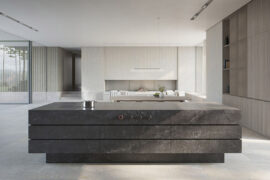
For those who appreciate form as much as function, Gaggenau’s latest induction innovation delivers sculpted precision and effortless flexibility, disappearing seamlessly into the surface when not in use.
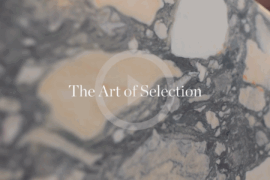
CDK Stone’s Natasha Stengos takes us through its Alexandria Selection Centre, where stone choice becomes a sensory experience – from curated spaces, crafted details and a colour-organised selection floor.
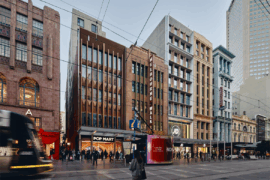
Merging two hotel identities in one landmark development, Hotel Indigo and Holiday Inn Little Collins capture the spirit of Melbourne through Buchan’s narrative-driven design – elevated by GROHE’s signature craftsmanship.

For a closer look behind the creative process, watch this video interview with Sebastian Nash, where he explores the making of King Living’s textile range – from fibre choices to design intent.
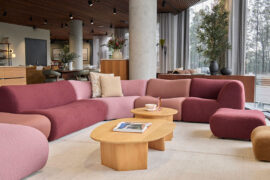
Poised at the intersection of design and service, King Trade has launched a new dedicated hub in Bondi Junction, which offers tailored product, service and pricing for architects and interior designers.

At the NGV’s Making Good: Redesigning the Everyday, design becomes a force for repair. From algae-based vinyl to mycelium earplugs, the exhibition proves that rethinking the ordinary can reshape our collective future.
The internet never sleeps! Here's the stuff you might have missed

A research exhibition reimagines St Kilda’s civic spaces through soft infrastructures that enhance wellbeing and urban experience.
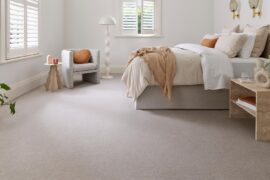
Good looks count, but function completes the space.